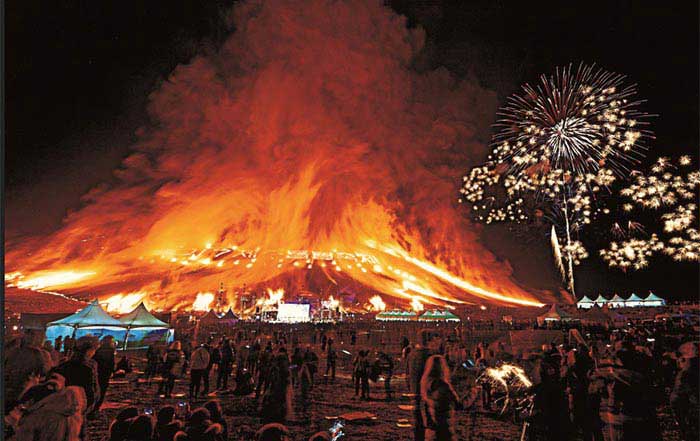With its memorable monuments and piercing skyscrapers, Korea has been rightly described as ";a true colourful kaleidoscope."; Who'd not want to enjoy the country's exciting cultural diversity and heritage? Generally, Korea has vastly interesting traditions, rituals, a vibrant community and a unique culture. The country's natural beauty is just as spectacular and gorgeous as its national culture. But you cannot enjoy these aspects to the full without experiencing Korea's influential festivals. And you can do this while enjoying the country's natural aura. The best way to have a glimpse at Korea's historical heritage is by attending the country's famous festivals. These are simply incredible, a real taste of the native culture. First, here's an outline of Korea's most popular cultural festivals: The Jeju fire festival, hansik, jinju lantern festival, yudu, seongsan sunrise festiva, seollal, boryeong mud festival and Gwangju world culture kimchi festival. You can be part of all these. Let's delve in.
The Hansik Festival
The Hansik festival is also known as the ";Cold Food Festival."; During this festival, the people usually indulge in cooking without using fire; this means they eat cold food throughout the day. According to Korean mythology, the whole country is supposed to perform unique sacrificial rites. Among these are the Neungwon and Jongmyo royal shrines. The locals commonly visit their families' ancestral gravesites and hold personal memorial services. The Hansik festival strikingly marks the start of the farming season- at this time, the farmers spread seeds taken from the farmhouse as a sign of commencing the agricultural activity cycle.
Seolnal
Seollal is a happy New Year festival - it marks the New Year in the Korean calendar. Actually, Seolnal is among the most celebrated Korean festivals that marks the first day of the year. During Seolnal, the whole country is supposed to celebrate. Locals kick off the celebration by paying tribute to the ancestors and performing folk rites. At this time, the folks wear traditional dresses, listen to folk tales, and play folk games. People say greetings and exchange blessings, wishes, sweets and gifts.
Jeju Fire Festival
This is a major festival for welcoming Korea's health and harvest seasons. Held over three days in late February and early March, the Jeju fire festival is among the country's most popular celebrations. At this time, the city of Jeju usually sets ablaze- it's a sign of praying for and welcoming a new year. There is the promise of good health, ample harvest and happiness. Overall, the Jeju fire festival symbolizes the ancient grass-burning ritual- it's a sign of ridding the city of vermin) before the season resumes. The Jeju Fire Festival is so unique- the sight of Jeju consumed by fire is most exciting, stunning, and dazzling. The people celebrate the Jeju Fire Festival with torch marches, folk dance and tribal games activities.
Ice Festival, Hwacheon County
Ice festival is held in one of the frozen Hwacheon County rivers. Ice Festival is among the most exciting and mesmerizing Korean festivals. During this festival, the locals walk through sub-zero temperatures for trout fishing; they catch fish using bare hands from drilled ice holds.
Yudu
Yudu is another unique cultural celebration; it's one of the most famous celebrations. During this festival, the locals usually offer the first harvests to their gods (this is done at the local household level). They initiate the gathering of fruits and crops as an annual household stock. The local peoples also visit a nearby river or stream to get rid of evil spirits by washing their hair. Yudu is generally celebrated in summer; the people rejoice at the big festival by consuming healthy soups like ginseng, chicken broth, and other partaking.
Jinju Lantern Festival
The Jinju Lantern Festival is among the oldest festivals in Korea. It's a classic showcase of Korea's traditions and culture. During the Jinju Lantern Festival, the native people light thousands of red lanterns near the Nam River bank while making wishes for their well-being, prosperity and health. This custom first started in 1592. It was marked with a lantern-lighting custom to prevent Japanese troops from crossing the Namgang River (this was during the infamous Japanese invasion). The lanterns were considered a tribute to the veterans of the Jinjuseong Fortress Battle. While attending, you can enjoy these performances, street parades and local street food. You can even make your own lantern and hang it in the Tunnel of Wish Lanterns.

